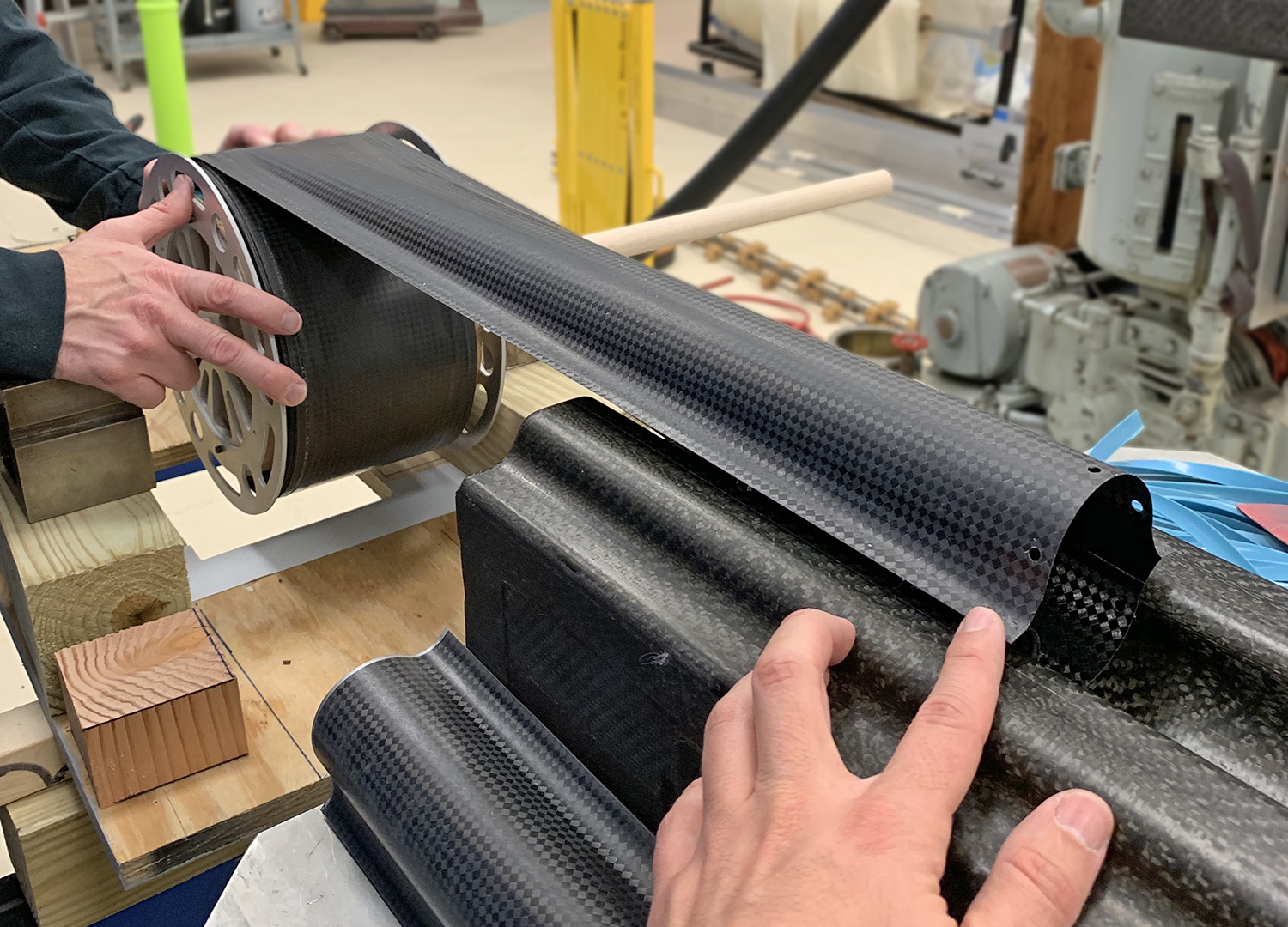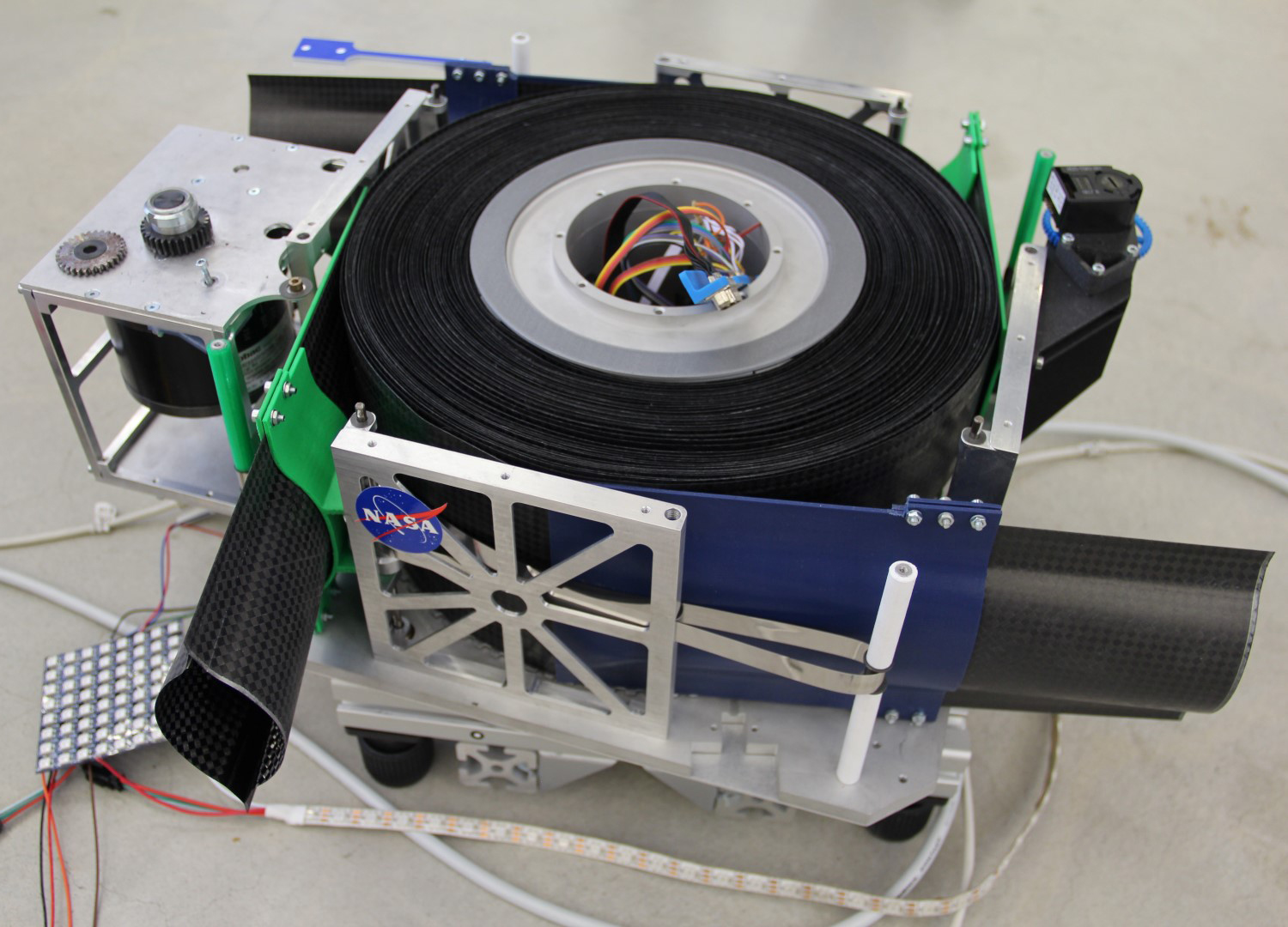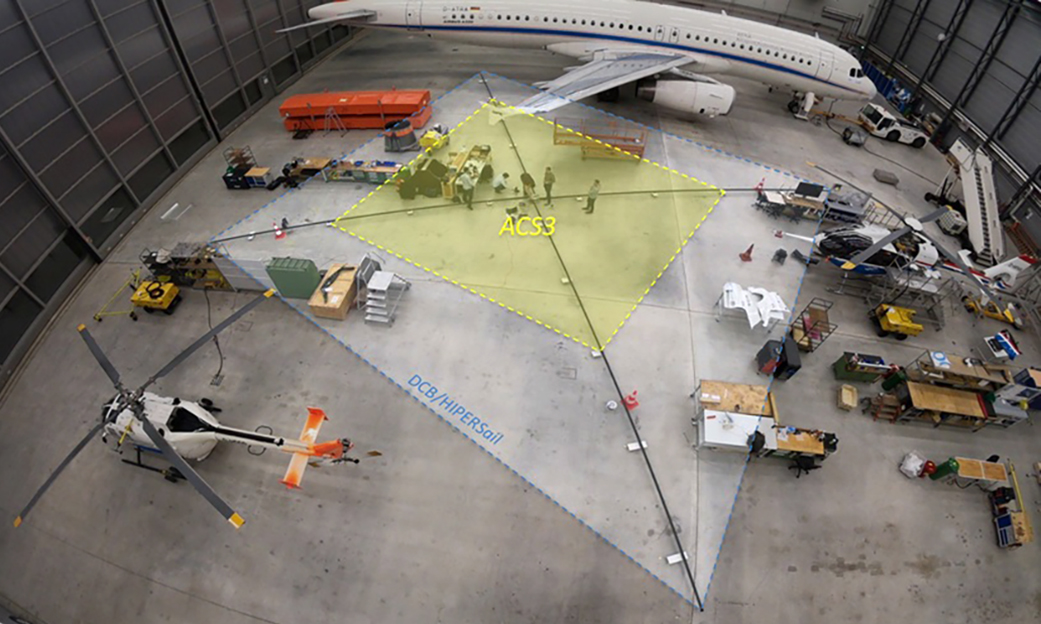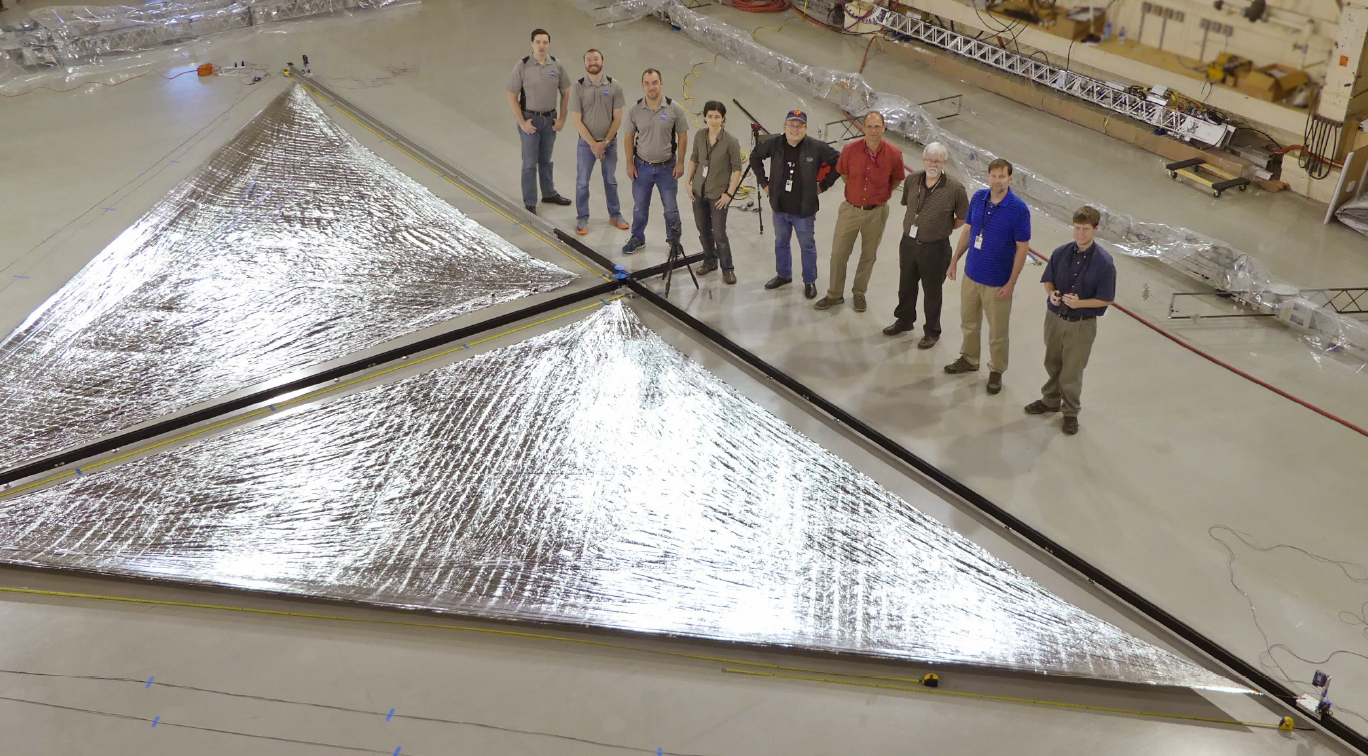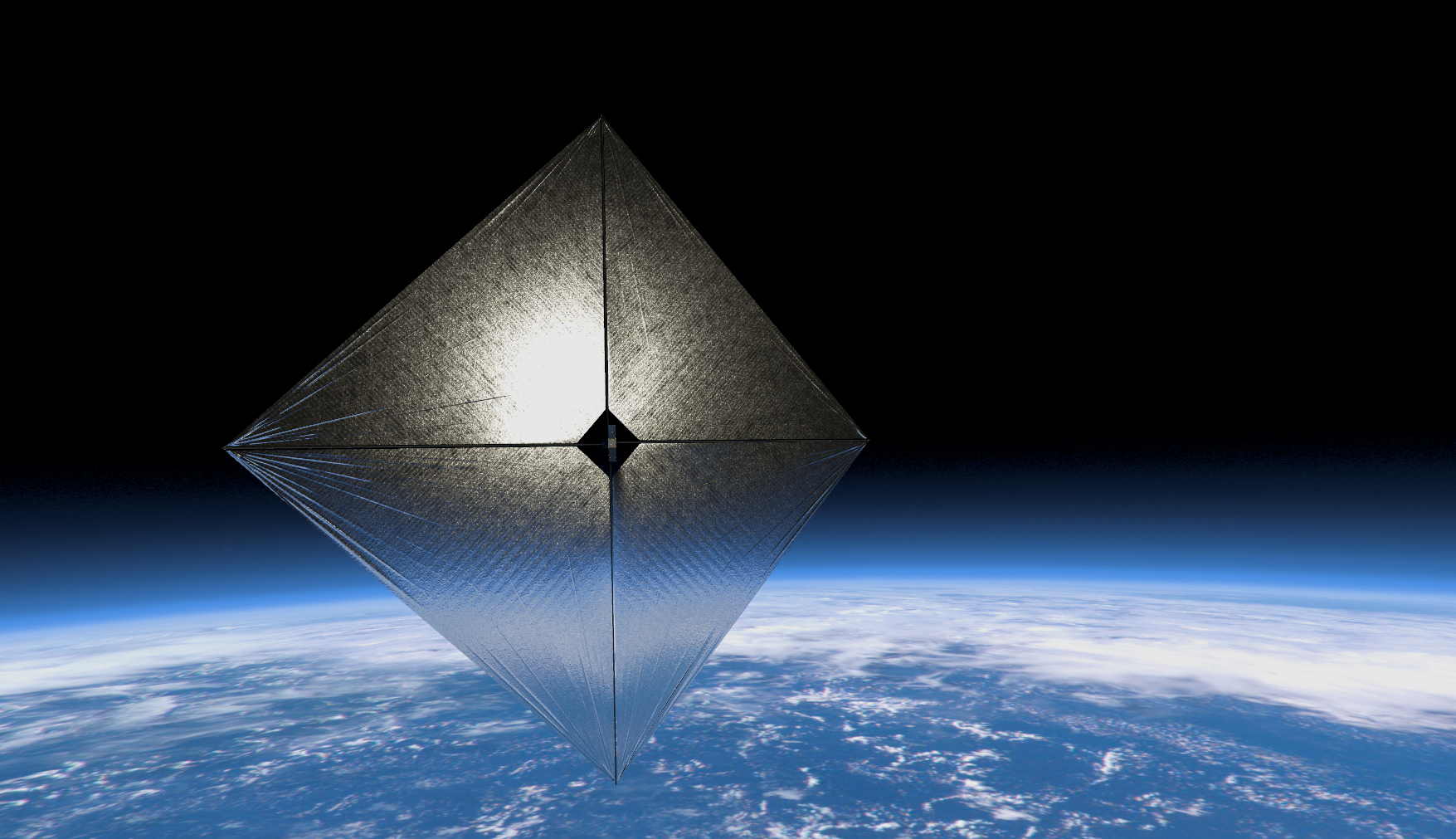In recent years, NASA and other organizations have begun to use small satellites more and more as technologists have miniaturized spacecraft avionics. Small satellites can now be used for some missions previously reserved for larger satellites. Additionally, they have a lower manufacturing cost compared to larger satellites and can be mass produced more easily.
Small satellites are particularly great candidates for carrying deployable antennas, radiators, solar panels and other instruments. However, there are limited designs for compact, lightweight support structures that can be folded or rolled up for launch and then self-deployed in space to support these kinds of systems on small satellites.
NASA’s Deployable Composite Booms project, led out of NASA’s Langley Research Center in Hampton, Virginia, is answering this need for a lightweight, foldable and rollable structural material to enable large deployable systems on small satellites. The project is developing 54-foot, thin-shell composite structural booms much lighter than metals. These booms can physically extend and support a wide range of small satellite deployable systems, such as solar arrays, antennas, drag sails, solar sails, and more. Under this project, the German Aerospace Center (DLR) is developing the unit that will store and deploy these composite booms and is performing structural testing of the booms for the project.
These DCB booms will enable high-power solar arrays, large antennas for high data rate communications, large drag augmentation devices, and high thrust propulsion systems to be included on small satellites. These new composite booms are inexpensive to manufacture and have the ability to be packaged in very small volumes for a long period of time without becoming distorted in shape. Additionally, the DCB team has performed functional testing on the booms that shows they deploy reliably and maintain the intended structural performance and shape once deployed.
Before launching a mission into space, these thin-ply composite booms will be flattened and rolled onto spools, much like a carpenter’s measuring tape, for compact stowage within the spacecraft. These DCB booms are 75% lighter and experience 100 times less in-space thermal distortion than equivalent available thin-shell metallic booms. This additional boom performance enables engineers to increase significantly the size of solar sails on small satellite platforms, which could more than triple the propulsion performance of state-of-the-art solar sail structures for small satellites under development.
The DCB team is aiming to qualify its boom concept to be considered ready for flight by mid-2021. This will prepare the technology for possible use on future deep space small satellite missions. DCB is also in discussions with the other NASA projects and the Air Force Research Laboratory to support flight experiments that could benefit from their boom technologies, and is licensing some of the boom technologies invented to industry for commercial exploitation.
The DCB booms will ultimately enable a variety of science and exploration missions for small sailcraft, including communication relays between the Earth and Moon, asteroid and planetary reconnaissance, and space weather early warning platforms for human exploration support.
Partners:
- DLR is a collaboration partner on the DCB project and is performing structural characterization testing of the DCB developed boom. DLR is also developing the boom deployer mechanism for demonstrating the functional performance of the booms, particularly packaging and deployment.
- The University of Central Florida is also supporting testing and modeling of the thin-ply composite laminate materials and representative boom forms for characterization of viscoelastic behavior, as they need to package for a long period of time without permanent distortion.
- DCB technology is currently being infused into a small solar sail system — called the Advanced Composites Solar Sail System 3 — for flight testing. The collected ACS3 flight data will be used to design future, larger-scale solar sail systems based on the DCB boom technology. In addition to this work, DCB’s larger 54-foot booms could enable a scaled-up, mission-enabling version of the ACS3 system to be flown in a larger platform, such as a 27U cube satellite, which is about twice the size of the current ACS3 satellite.
Milestones:
- October 2019 — The DCB team completed fabrication of five composite booms that are roughly 5 inches tall and 54 feet long.
- November 2019 — The DCB team delivered the composite booms to DLR for use in packaging and deployment testing with the DLR’s engineering model boom deployer.
- June 2020 — The DCB team completed computational model development and model correlation with test data from DLR’s stiffness and strength testing of DCB delivered booms.
NASA’s Deployable Composite Booms project, led out of NASA’s Langley Research Center in Hampton, Virginia, is answering this need for a lightweight, foldable and rollable structural material to enable large deployable systems on small satellites. Credits: NASA
Technical Paper Resources:
https://ntrs.nasa.gov/search.jsp?R=20170001569
https://arc.aiaa.org/doi/abs/10.2514/6.2018-1437
https://arc.aiaa.org/doi/pdf/10.2514/6.2018-0938
https://ntrs.nasa.gov/search.jsp?R=20190033365
https://ntrs.nasa.gov/archive/nasa/casi.ntrs.nasa.gov/20190028916.pdf






























